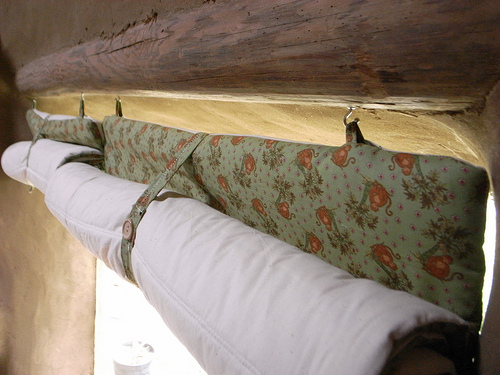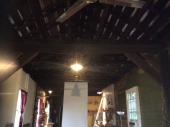
 16
16







 1
1





A build too cool to miss:Mike's GreenhouseA great example:Joseph's Garden
All the soil info you'll ever need:
Redhawk's excellent soil-building series





 1
1




 1
1




Trace Oswald wrote:Really good information.
There is a website that shows their version of this with step-by-step details for people like me that do better with those. Kume Project
 1
1




 3
3




Kathleen Sanderson wrote:This is our first year in this climate (south-central Kentucky) and we made it through just fine with no AC! We have a couple of box fans and a ceiling fan (and IF I can ever get an electrician out here, all four downstairs rooms will have ceiling fans in them for next year); also I didn't try to do too much physical work during the hottest part of the day. And we drank a lot of cold tea! But we made it! After fifteen years in the high desert, I wasn't sure how it would be -- and I still miss the cool nights there. But I don't miss all the smoke from forest fires....
Kathleen
 2
2




 1
1




 1
1







Invasive plants are Earth's way of insisting we notice her medicines. Stephen Herrod Buhner
Everyone learns what works by learning what doesn't work. Stephen Herrod Buhner
 3
3




David Baillie wrote:Nice find Frank! I've lost track of how many hard valences I have been asked to remove over the years during Reno work. The valence that encases the top of vertical curtains keeps the air from flowing behind and down. They were standard once upon a time in an era of expensive home heat, maybe they should make a comeback. I have tight fitting wood blinds myself but my windows are double pane low e . I have thought I might build storms for them this year another element ripe for a comeback... there is always room for improvement.
Cheers!
 1
1




Anne Miller wrote:Lucrecia, this is a great topic! Thanks for starting it.
If you used the kind of rod that is close to the wall or window and put a pocket in the side of the beach towel to run the rod through this would be real simple.


 2
2




Be the shenanigans
you want to see in the world.

 1
1




K Eilander wrote:I've made a couple of experimental sets of curtains using foil bubble-wrap style insulation slid into a polar fleece pocket.
They work extremely well! On an average winter's day, you can feel an immediate temperature difference between open and shut.
The problem is if I hold my hand near the edges I can feel a stream of cold air pouring out from behind. I tried velcro all around, but it didn't stick to the metal door I tried it on -- perhaps due to humidity(?). Plus, it's not really ideal anyway as it makes it annoying to open.
Also, I've never figured out a good way to secure them. The curtains for my recessed windows are currently just stuffed in the hole and on flush windows for doors, they are poorly held up with a couple of magnets.
So I guess I have two questions:
1) How do I attach the curtains and still make them easily open and close...
2) And yet there is less heat loss due to air gaps around them.
Do you think some kinds of tracks or something would work?? I'm no draperies enthusiast, and wide open to ideas, here.
out in the garden





out in the garden

 2
2




I'm glad I'm not the only one who finds velcro annoying. In the right place though, it can be a great option. It can be difficult to find the velcro tape that is *not* sticky back. I make Roman shades with the wooden support above the window frame and the shade also several inches out to each side, so that the shade is against the wall. Since most window frames stick out a little on the inside, the shade sits against the wood, slowing but not eliminating air flow. If you eliminate air flow completely, I'd be a little worried about mold developing. I screw the hook velcro to the top of the top board, and the fluff velcro to the shade, so the shade can easily be removed and washed.The problem is if I hold my hand near the edges I can feel a stream of cold air pouring out from behind. I tried velcro all around, but it didn't stick to the metal door I tried it on -- perhaps due to humidity(?). Plus, it's not really ideal anyway as it makes it annoying to open.
Visit Redhawk's soil series: https://permies.com/wiki/redhawk-soil
How permies.com works: https://permies.com/wiki/34193/permies-works-links-threads
 1
1




Visit Redhawk's soil series: https://permies.com/wiki/redhawk-soil
How permies.com works: https://permies.com/wiki/34193/permies-works-links-threads
 2
2









Visit Redhawk's soil series: https://permies.com/wiki/redhawk-soil
How permies.com works: https://permies.com/wiki/34193/permies-works-links-threads

|
That feels good. Thanks. Here's a tiny ad:
Homestead Pigs Course
https://permies.com/wiki/365748/Homestead-Pigs
|









